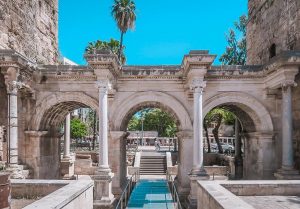
CLIL in Action: Bilingual Education for All Subjects
Course Description
This course aims to equip educators with the skills to implement CLIL (Content and Language Integrated Learning) in their classrooms, allowing them to teach in a bilingual setting. CLIL enables students to engage with both the subject content and the target language simultaneously. Educators will learn to integrate various subjects with a foreign language, creating a holistic learning experience where language is used as a tool. This course, supported by digital tools and interactive strategies, focuses on enhancing classroom practices.
Course Methodology
This course adopts a hands-on, activity-based approach that encourages active participation from educators. Educators will develop lesson plans using the CLIL methodology and experience them through classroom simulations. The course will include interactive and collaborative activities with a strong emphasis on using digital tools. Theoretical lessons will be kept short, focusing on practical work and group projects.
Course Objectives
- To enhance the skills of educators teaching in a bilingual setting using the CLIL methodology.
- To help educators learn how to integrate various subjects with a foreign language.
- To improve student engagement through digital tools and interactive methods in the classroom.
- To develop projects aligned with the Erasmus+ priorities of digital transformation and inclusive education.
Learning Outcomes
By the end of this course, educators will:
- Be able to plan and implement lessons using the CLIL methodology.
- Develop strategies to enhance student interaction in bilingual education with digital tools.
- Create student-centered lesson plans and assessment methods for bilingual education.
- Develop innovative teaching strategies aligned with Erasmus+ projects.
Tentative daily programme
Day 1: Introduction to CLIL and Bilingual Education
- Introduction and Icebreaker
- Icebreaker Activity: “Two Truths and a Lie”
Participants share two truths and one false statement about themselves.
- Icebreaker Activity: “Two Truths and a Lie”
- Basics of CLIL and Bilingual Education Strategies
- Key principles of the CLIL approach and successful practices in bilingual education.
- Best Practices: Examples of CLIL in various subjects.
- Implementing CLIL with Digital Tools
- Using Google Classroom, Padlet, Kahoot to support bilingual education.
- Project Simulation: CLIL Lesson Planning
- Participants will develop lesson plans using the CLIL methodology.
Day 2: Interdisciplinary Lessons with CLIL
- Warm-up Activity: “Categorical Line-up”
- Participants line up based on random categories to initiate communication.
- Interdisciplinary Approach with CLIL
- Designing bilingual lessons that integrate various disciplines.
- Successful Projects: CLIL in mathematics, science, and social studies.
- Active Use of Language in Bilingual Education
- Designing lesson plans that merge language teaching with academic content.
- Project Presentations and Feedback
- Participants present their CLIL-based lesson plans and receive feedback.
Day 3: CLIL with Digital Tools
- Warm-up Activity: “Digital Taboo”
- Educators describe educational technology terms without using specific words.
- Digital Tools for CLIL Implementation
- Increasing student engagement with Padlet, Quizlet, Mentimeter.
- Enhancing Student Participation in Bilingual Education
- Strategies to maximize student interaction in CLIL lessons using interactive digital tools.
- Digital Project Presentations
- Participants present projects developed with digital tools.
Day 4: Classroom Management with CLIL
- Classroom Management Strategies with CLIL
- Strategies to facilitate classroom management in bilingual education.
- Digital Classroom Management Tools
- Using Google Classroom, Edmodo for class management and student feedback.
- Project Presentations and Evaluation
- Educators present projects developed with the CLIL methodology and receive feedback.
Day 5: Conclusion and Cultural Excursion
- Project Feedback and Evaluation
- Future Collaboration Ideas for CLIL Projects
- Certification Ceremony and Cultural Excursion
At the End of the Course
- Participants will receive their certificates.
- Participants will provide a general evaluation of the course and complete the event survey.
- Participants will receive course materials, videos, photos, and PDF documents in both digital and print formats.
Follow-up and Support
After the course, participants will receive all course materials both digitally and in print. An email group will be created for idea exchange, and self-evaluation materials will be provided.
*Please note that course activities and content may vary depending on participants’ preferences and the instructor leading the session. Any changes to the course are at the discretion of the instructor. If there is a specific topic you would like to include in the course content, please let us know in advance.
Course Info
- Duration: 5 Days
- Location: All Location
- Cost: € 80-Day
- Certificate: Yes
- Prerequisites: No










